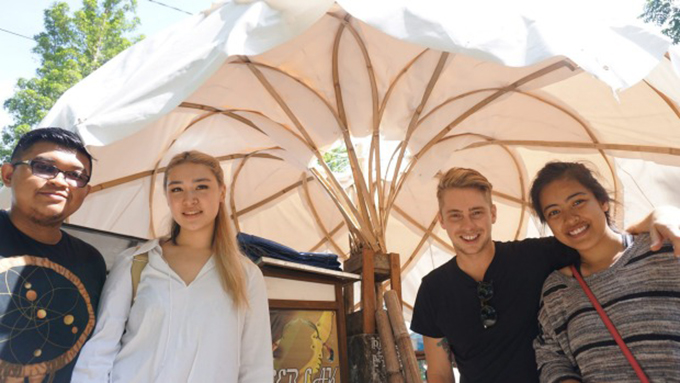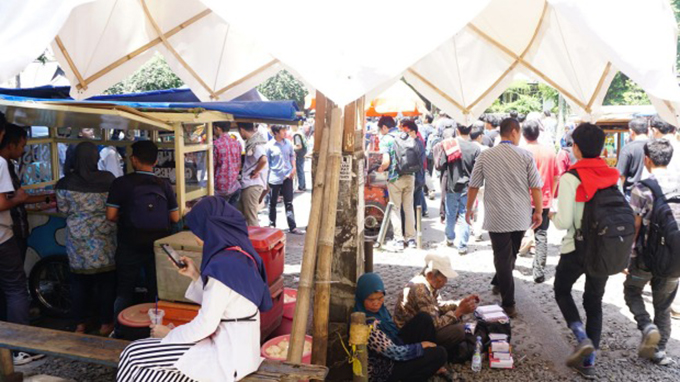AsiaPacificReport.nz
By Michael Neilson in Jakarta
Walk down almost any street in Indonesia and you are bound to find street vendors, selling everything from fried tofu to a fresh new haircut.
Known as “kaki lima”, or five legs, food vendors are a vital part of the Indonesian economy, feeding the city’s workers, and even becoming a point of pride.
They have even been admired for their resilience, following the global financial crisis, and their calmness in the face of last month’s Jakarta terror attacks.
However kaki lima vendors are often evicted from busy precincts such as Jakarta’s old city, or Kota Tua, with authorities claiming they are unhygienic eyesores that clog the streets.
So when Dr Rizal Muslimin, an architecture lecturer at the University of Sydney, needed a practical project for his students he was drawn to the street vendors in Bandung, Indonesia’s third largest city, where he first attended university.
The students were tasked with developing a sustainable street vendor shelter for Jakarta vendors.

Dr Muslimin and his counterpart at the Bandung Institute of Technology, Professor Aswin Indraprahasta, came up with an exchange programme where architecture students would spend a week in Sydney designing shelters for street vendors, and another week in Bandung building and testing them.
Real-life experience
They wanted to challenge their students to use design to address a social issue and also give them rare real-life experience.
A group of six students from Sydney and eight from Bandung took part in the exchange during the last two weeks of January.
They split into groups of three, each with a different brief to design shelter structures that could replace the existing ramshackle designs. The designs were to be not only attractive, but functional and user-friendly. They also had to take into account cost and local materials, with most using bamboo.
Australian student Matthew Naivasha said they created structures that could adapt from serving food in the day to clothes stalls in the evening.

The designs could fold up or incorporate street lamps or poles.
“The vendors felt touched. The government doesn’t like them, doesn’t think they look nice, and so for the Aussies to come and to try and make it a better place, they really appreciated that,” says Arum Larasati, a student at the Bandung Institute of Technology.
The project aligns neatly with Bandung’s “Creative City” concept, promoted by Mayor Ridwan Kamil, which harnesses Bandung’s creative community to make the city more vibrant and liveable.
Dr Muslimin believes the shelters could also be used in markets in Australia.
“The needs of stallholders in Australia’s own community markets are not dissimilar to the Indonesians. They both need something that that is easy to transport and set up and pull down in a short space of time,” says Dr Muslimin.

–]]>







